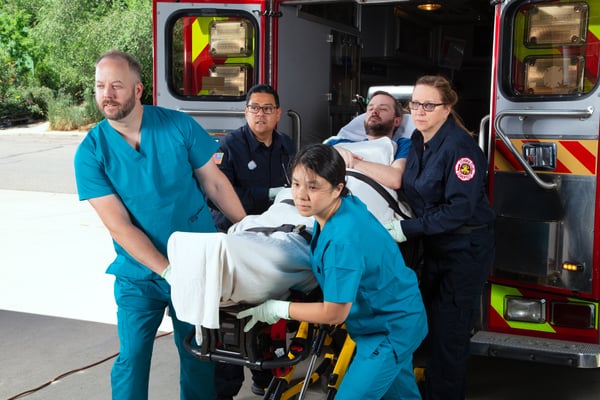Hospitals: Here’s How To Build Partnership With EMS and Improve Performance
How Bi-directional Data Exchange Delivers Insights That Improve the Continuum of Care
Access to comprehensive patient data throughout the continuum of care is a major interest for multiple stakeholders
Was this information valuable?

Access to comprehensive patient data throughout the continuum of care is a major interest for multiple stakeholders. Emergency department providers can better optimize treatment; emergency medical service (EMS), cardiac coordinators, and quality assurance (QA) teams can perform better analysis and feedback; and reporting can make compliance and certification much easier.
Each of these stakeholder teams is tasked with constantly referencing, extracting, and analyzing patient data that encompasses every intervention. In emergency situations, every minute that passes without smooth communication and data sharing between EMS and the destination facility is a lost opportunity for both the patient, and (later), the QA team. One of the major issues behind challenging transfers is the significant gap in interoperability between pre-hospital and hospital systems.
Closing the Interoperability Gap
Interoperability technology allows for near real-time data that can be transmitted easily between EMS teams and hospitals, including visibility into patient care reports (PCRs) such as images, vitals, treatments, medical history, demographics, and more that improve outcomes. In addition, automatically converting data from NEMSIS to a compatible format before importing to electronic medical records (EMR) — using standards such as HL7v2, Fast Healthcare Interoperability Resources (FHIR), and Consolidated Clinical Document Architecture (C-CDA) — helps hospitals meet compliance requirements.
A bi-directional data exchange platform can have several other benefits that save time, improve safety, and strengthen the continuum of care, including:
- Access to complete patient information from incident to discharge
- Faster treatment interventions
- More streamlined patient hand-off
- Reduced QA/QI workloads
- More efficient reporting and analysis
Making the Case for Interoperability
Investing in a bi-directional data exchange platform should deliver strong value and should not require extensive or complex IT training. A best-in-class solution built on common standards can be rapid and straightforward to integrate into existing hospital and EMS systems. Decisions makers should ask questions like:
- How difficult or easy is it to obtain PCRs, and what happens if they aren’t quickly available?
- With this wait time, how are teams and/or workflows impacted?
- How much does this wasted time affect treating different patient populations?
- How much time is spent re-inputting data for imports?
- Could receiving pre-hospital data improve patient outcomes and team performance?
- How much time, money, and resources could be saved by switching to an automatic platform for these processes?
Through bi-directional data exchange, the hospital and partner EMS agency data can improve coordination of care throughout the patient journey. To learn more about this topic and what to consider when evaluating a platform like ZOLL Care Exchange, read the full article: How Rapid Access to Pre-hospital Data Supports Cardiac System of Care Excellence.
Read More About EMS/Hospital Interoperability
Compliance Accreditation and Patient Safety with Pre-hospital Emergency Care
Related Posts
How Hospitals Can Improve Patient Throughput, Streamline Discharge, and Prevent Readmissions
Supporting Better Operational and Financial Performance With EMS-Hospital Collaboration
ZOLL Pulse Blog
Subscribe to our blog and receive quality content that makes your job as an EMS & fire, hospital, or AR professional easier.
ZOLL Pulse Blog
Subscribe to our blog and receive quality content that makes your job as an EMS, fire, hospital, or AR professional easier.




